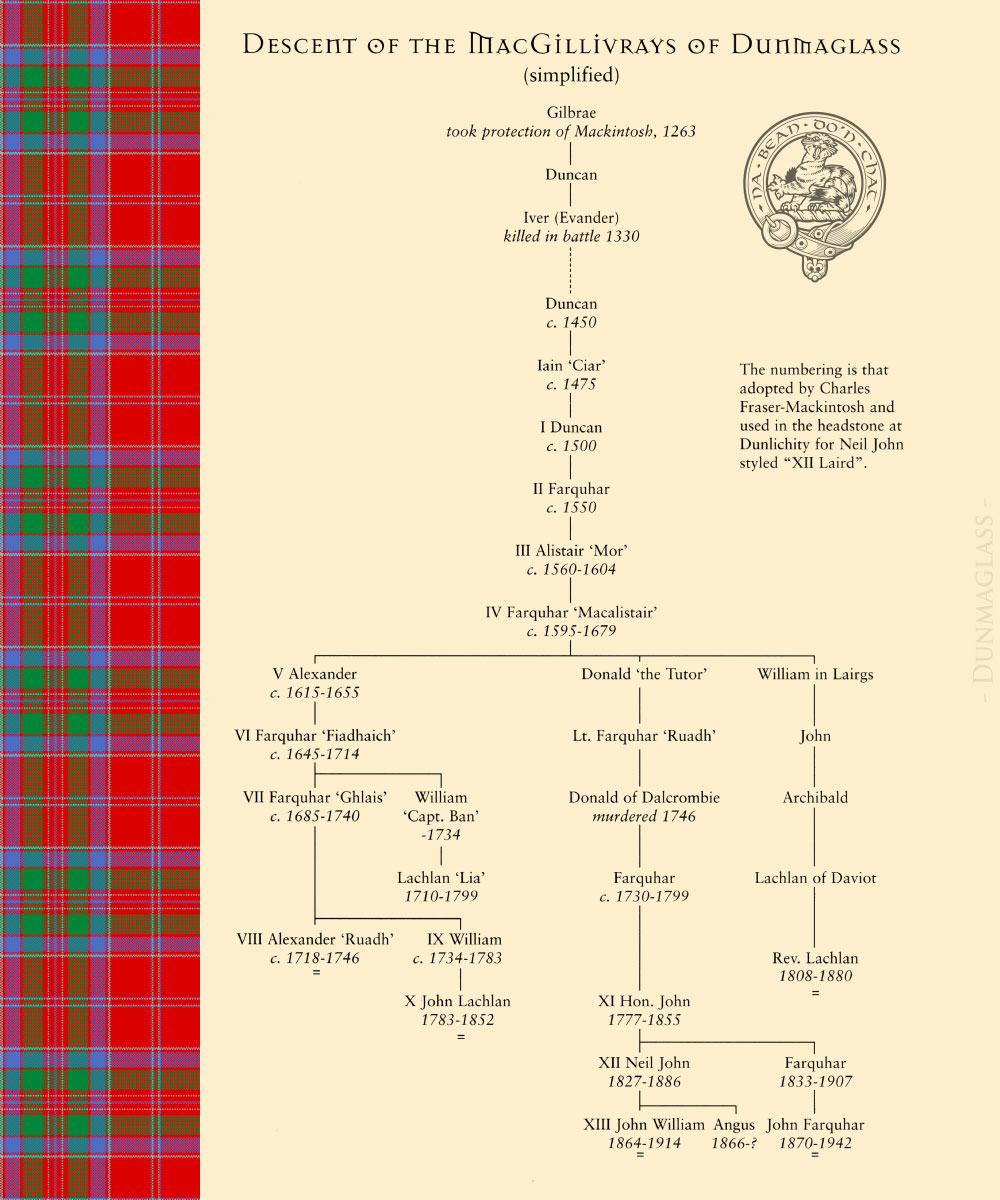Als stamvader-naamgever van de Clan MacGillivray worden genoemd zowel Gillibride of Gillibrighde als ook Gillibhraec, Gillibrath of als samentrekking hiervan Gilbrae, omstreeks het jaar 1100 geboren.
Gillie is het Keltische woord voor helper of dienaar. In het eerste, het meest waarschijnlijke geval, zou de naam betekenen: "Aanhanger van Bride of Brigitta", een bekende Ierse heilige, en in het tweede: "Dienaar des oordeels", de benaming voor een erfelijke rechter onder de koningen van de westelijke eilanden. 'Bhraec' dat wordt uitgesproken als 'vray', komt overeen met het Engelse 'wrath' (toorn).
Gillibride had twee zonen, Somerled, de stichter van de Clans MacDonald, MacDougall en MacRory, en Anradan of Henry. De jongste zoon nam zijn vaders naam er als familienaam bij. Hij noemde zich Anradan Mac Gillibride.
Sedertdien, de eerste helft van de twaalfde eeuw, is onze achternaam blijvend gevoerd. Maar het is dus nog niet zeker dat onze naam van deze Mac Gillibride is afgeleid en evenmin dat iedereen die zich tegenwoordig Mac Gillivray noemt deze afstammingslijn heeft.
* geboren, & gehuwd, + overleden
| I | ca. * 1230 |
N. MacGillivray. Geboren omstreeks 1230. In 1263 sloot hij zich met zijn aanhang, komend uit het westen aan bij de Mackintoshes ten overstaan van Farquhar V Chief van die Clan in het kasteel van Inverness.
|
||||||
| II |
Duncan Alin (de Schone) MacGillivray. Hij huwde Isabella Mackintosh in 1292, dochter van Angus VI Chief en Eva, erfgename van de Clan Chattan. |
|||||||
| III | + 1330 | Evander MacConochie MacGillivray. Hij sneuvelde in 1330 bij de heuvel van Drumglay in de strijd tussen de Clan Chattan en Clan Cameron. | ||||||
| IV | Farquhar MacGillivray (Stippellijn tussen Evander en Duncan in "Descend Of The MacGillivrays Of Dunmaglass" wegens vereenvoudiging van de stamreeks.) | |||||||
| V | Ewen MacGillivray (idem) | |||||||
| VI | John MacGillivray (idem) | |||||||
| VII | Bean MacGillivray (idem) | |||||||
| VIII | ca. 1450 | Duncan MacGillivray | ||||||
| IX | ca. * 1460 | Anckyl Ian Bar Ciar (de Bruine) MacGillivray. Geboren omrent 1460. | ||||||
| X | ca. 1500 | Duncan MacGillivray of Dunmaglass, I Chief. Hij huwde Fionnaghal Mackintosh, dochter van Duncan (Mackintosh) en Florence MacDonald. | ||||||
| XI | ca. 1550 | Farquhar MacGillivray of Dunmaglass, II Chief. Hij droeg in 1549 onder zijn zegel de landerijen van Dalmigavie over aan Robert Dunbar of Durris. | ||||||
| XII | 1604 | Alisdair Mor MacGillivray of Dunmaglass, III Chief. Vermeld in 1578 en 1581. Hij had twee broers: Duncan in Overculcabock en William in Culclaythohy. Na Alisdair's dood, ondertekende Duncan in 1609 het Clan Chattan Verbond. | ||||||
| XIII | * 1593 + 1678 |
Farquhar MacAlister MacGillivray of Dunmaglass, IV Chief. * in 1593. Hij verkreeg op 4 april 1626 bij "feu charter" van Koning James VI erferlijke rechten op Dunmaglass en tekende het Clan Chattan Verbond in 1664. + 1678. Uit zijn huwelijk:
|

